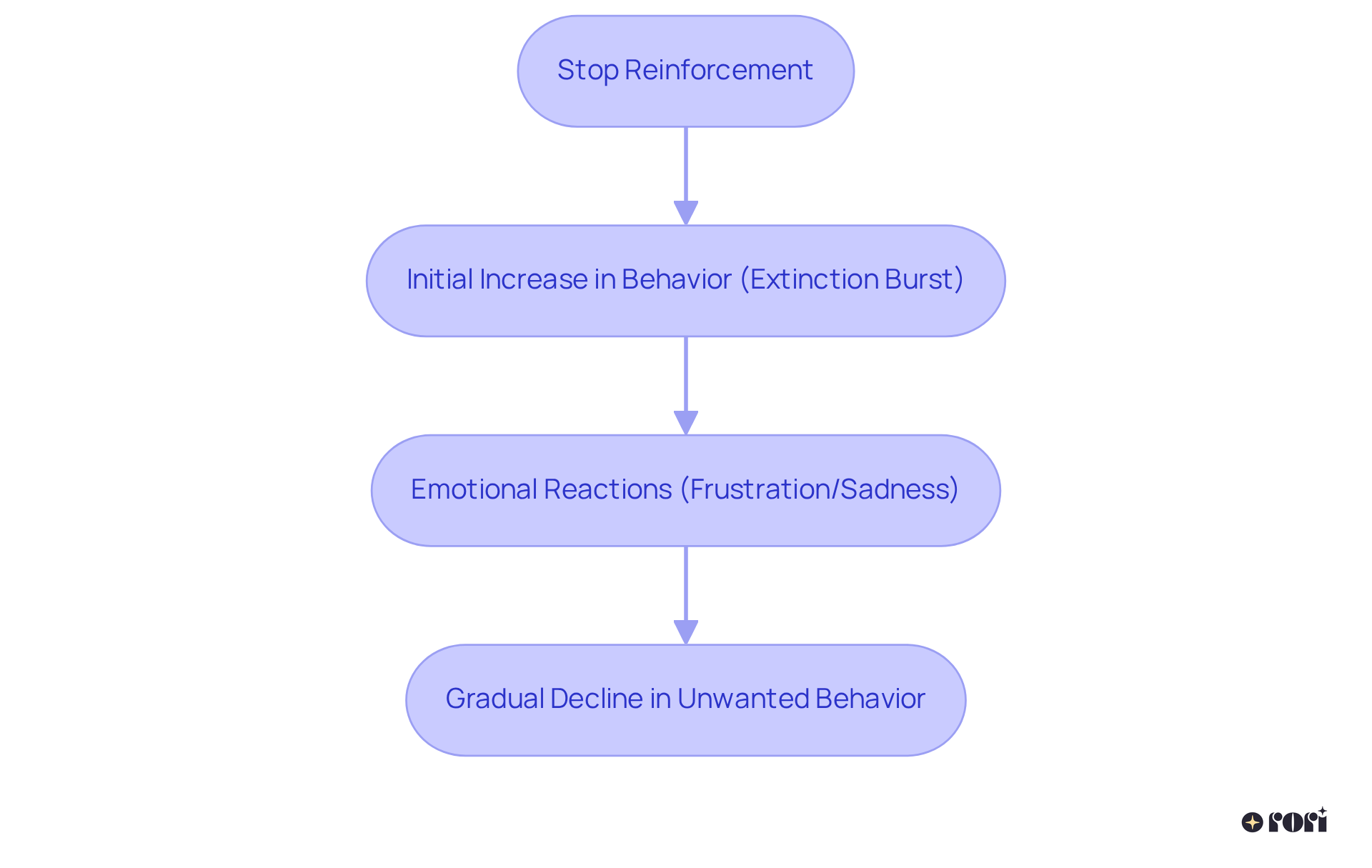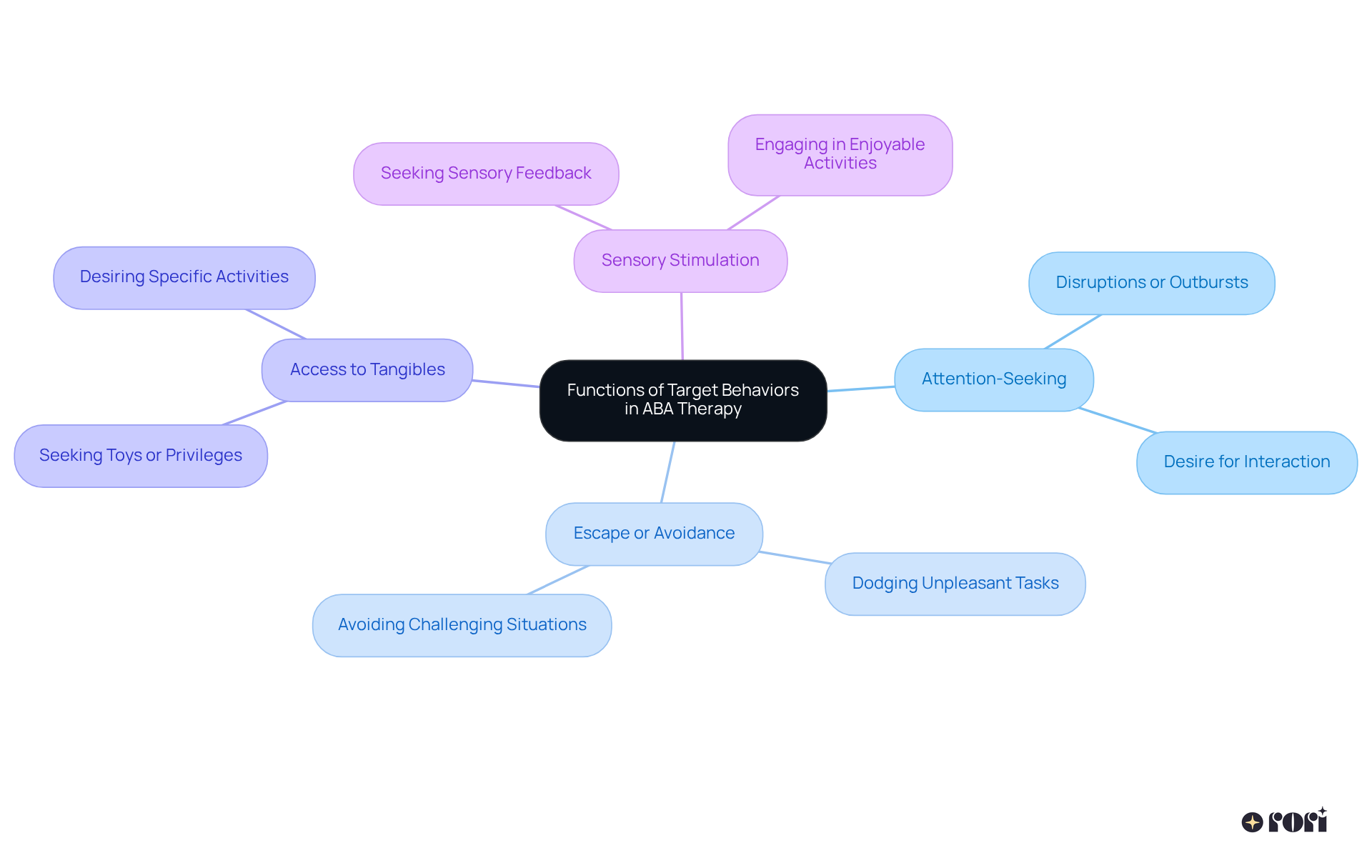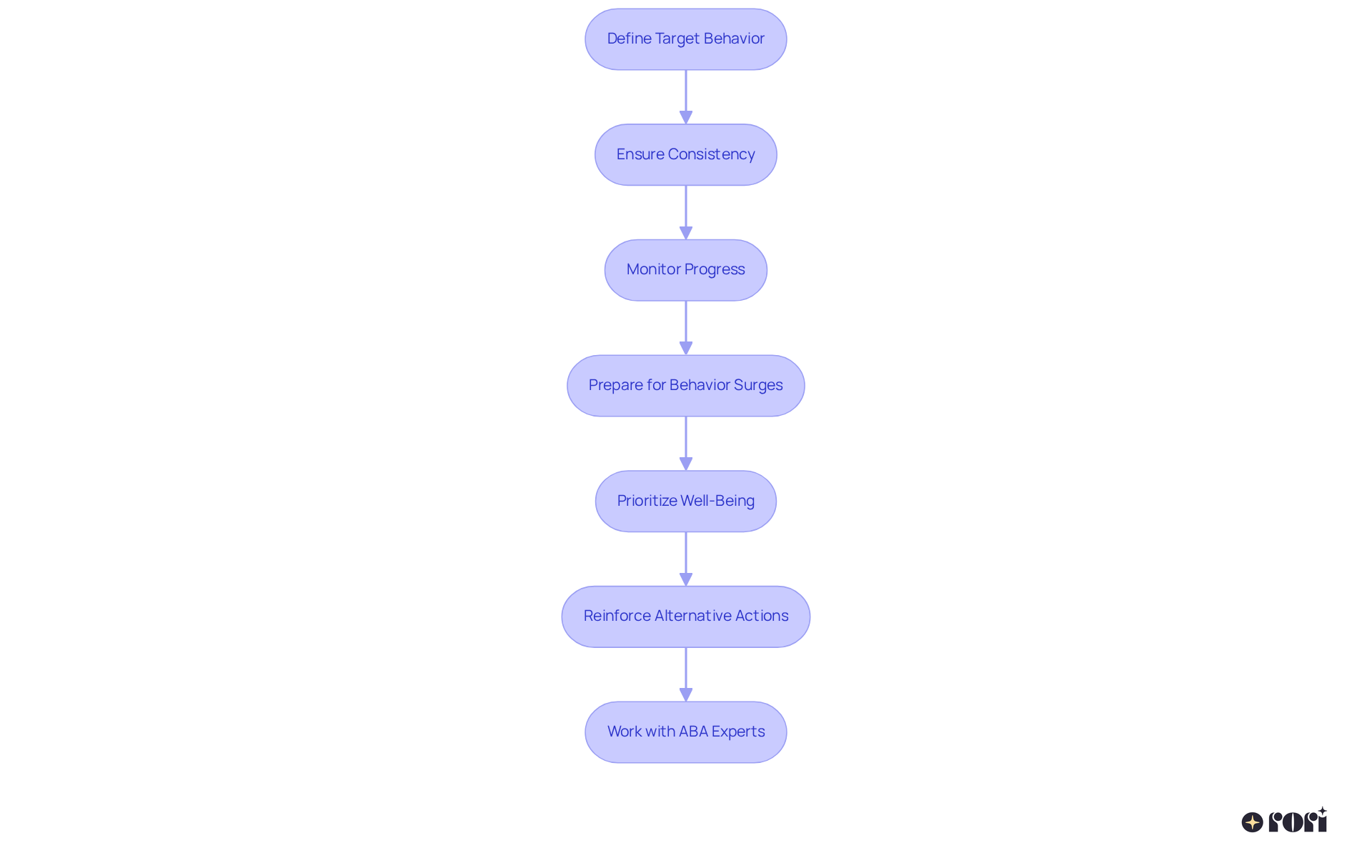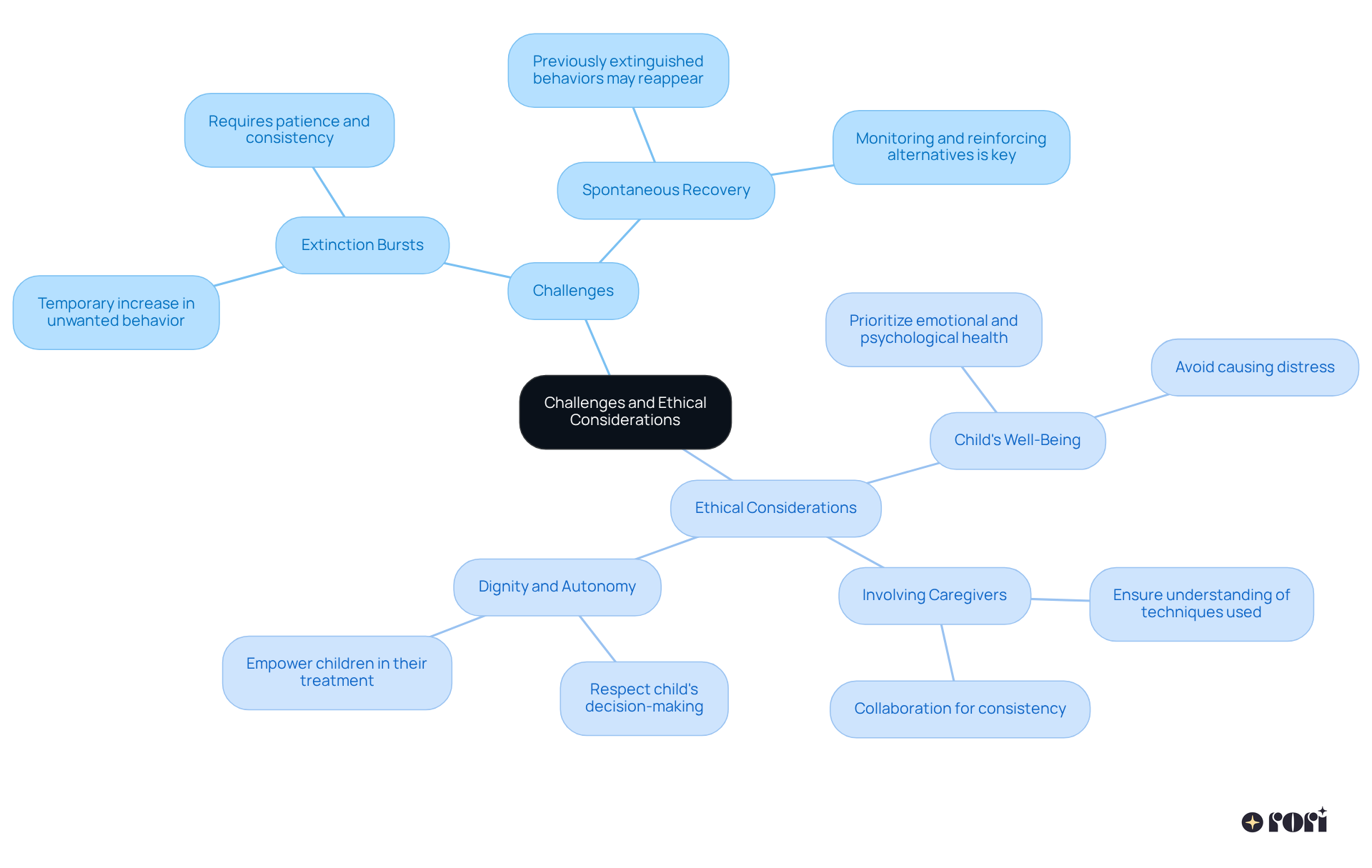This article dives into how extinction techniques in Applied Behavior Analysis (ABA) therapy can really make a difference in changing behaviors by stopping the reinforcement of unwanted actions. It’s important to know that extinction works best when caregivers are consistent and patient. You might notice some initial increases in the behavior—these are called extinction bursts—before you see a decline. Understanding this dynamic is key to navigating behavior change successfully.
Let’s explore this together! By being aware of these patterns, you can better support your child through the process. Remember, you’re not alone in this journey; many parents face similar challenges. Sharing experiences can help us all feel more connected and supported. We’re here to help you every step of the way!
Navigating the world of behavior modification can feel a bit daunting, especially for parents and caregivers who are trying to make sense of Applied Behavior Analysis (ABA) therapy. At the heart of this journey is the important concept of extinction—an essential technique that, when used correctly, can lead to meaningful behavioral improvements. Yet, the road to effective implementation often comes with its own set of challenges, including initial setbacks and emotional responses that can test even the most patient caregivers.
So, how can you harness the power of extinction while also ensuring your child’s emotional well-being? This article will explore the key techniques of extinction in ABA therapy, providing insights and strategies that empower you to foster positive behavioral changes. Let’s dive in and explore this together!
In Applied Behavior Analysis (ABA), extinction works best when it is used as an important method to help us understand how to change behaviors. Extinction works best when it involves stopping reinforcement for actions that were previously rewarded, which leads to a gradual decline in those actions. For instance, if a little one learns to yell for attention, consistently ignoring this behavior can eliminate the reinforcement (attention) and, over time, reduce the screaming.
But here’s the catch: extinction works best when we first stop reinforcing a behavior, which might lead to an initial increase in those unwanted actions. This is known as an 'extinction burst,' which indicates that extinction works best when certain conditions are met. Imagine a child who cries for candy; when they realize that crying no longer gets them the candy, they might cry louder or longer at first. This is a normal part of the process, and it’s crucial for caregivers to stay consistent and patient.
During this phase, children might show emotional reactions like frustration or sadness, which makes it essential for parents to understand these dynamics. Common strategies for managing unwanted behavior include:
By grasping these concepts and using practical strategies, parents and therapists can effectively implement interventions, as extinction works best when fostering positive behavioral changes. Let’s explore this together—you're not alone in this journey!

To effectively implement extinction procedures, it’s essential to understand the purpose behind the target behavior. In ABA therapy, behaviors often serve common functions, such as:
Carrying out a Functional Behavior Assessment (FBA) is key to uncovering the purpose of these actions. This evaluation involves direct observation, chatting with caregivers, and functional analysis methods to gather detailed information about the context of the behaviors. By understanding why a young person behaves in a certain way, clinicians can select the right strategies, as extinction works best when they not only address the behavior but also encourage positive alternatives.
Research shows that recognizing these functions can significantly enhance the effectiveness of interventions, leading to better behavioral outcomes for youth with autism. Did you know that only 32 studies (4%) assessed the impact of ABA with a comparison group? This highlights the need for more comprehensive research in this area. Furthermore, studies reveal that 47% of children who participated in the UCLA Young Autism Project treatment achieved normal intellectual and educational functioning, compared to just 2% of a control group. This really underscores the potential effectiveness of ABA interventions!
Let’s explore this together and see how we can support our children in the best way possible!

To implement extinction techniques effectively, let’s explore these steps together!
Clearly Define the Target Behavior: Start by specifying the behavior you want to decrease. For instance, if your child throws tantrums to get a toy, it’s important to outline exactly what a tantrum looks like.
Ensure Consistency: Consistency is key! All caregivers need to apply the same removal procedures. Extinction works best when one caregiver responds to the tantrum while another does not, as it can really affect the outcome. Research shows that when everyone is on the same page, behavioral change is much more successful.
Monitor Progress: Keep an eye on how often and how intensely the behavior occurs over time. This information is super helpful for evaluating how well the strategy is working and making any necessary tweaks. Regular chats with therapists to review progress and keep communication open are also essential.
Prepare for Behavior Surges: It’s good to know that behavior might initially increase before it decreases—this is called a behavior surge. It’s a normal part of the process, so staying calm and consistent during this phase is really important.
Prioritize Emotional and Physical Well-Being: Throughout this journey, remember to prioritize your child’s emotional and physical well-being. It’s crucial to ensure that the methods you use don’t cause them significant distress.
Pair with Reinforcement of Alternative Actions: While you’re implementing extinction, it’s helpful to support suitable actions that serve the same purpose as the unwanted behavior. For example, if your child throws a tantrum for attention, offer positive reinforcement when they ask for attention appropriately. This approach not only reduces the undesired behavior but also encourages healthier communication and interaction.
Work Together with Qualified ABA Experts: Connecting with qualified ABA experts can really boost the effectiveness of your behavior modification strategies. They can help ensure that these strategies are applied consistently across different environments.
We’re here to help you every step of the way! Feel free to reach out with any questions or share your experiences!

When applying elimination techniques, parents might face a few challenges. First up, we have Extinction Bursts. You might notice a preliminary rise in the unwanted behavior, often referred to as an extinction burst. It's important to stay consistent and patient during this time. Next, there's the possibility of Spontaneous Recovery. After a while, that previously extinguished action could pop back up. Keeping a close eye and reinforcing alternative behaviors is key to preventing this from happening.
Now, let’s talk about Ethical Considerations. It's vital for parents to ensure that using extinction doesn’t cause any harm or distress to their child. Always keep in mind the emotional and psychological well-being of your little one. Plus, involving caregivers in the process is essential. Make sure they understand the reasons behind the techniques being used. Remember, prioritizing your child's dignity and autonomy in decision-making is crucial. We’re here to help you every step of the way!

Understanding extinction in Applied Behavior Analysis (ABA) is crucial for effectively modifying behaviors. This approach emphasizes the importance of stopping reinforcement for unwanted actions, which can lead to a gradual decrease in those behaviors. By recognizing the complexities of extinction, including the potential for initial behavior surges and the emotional responses that may arise, caregivers can navigate the challenges of implementing these techniques with greater confidence and efficacy.
The article outlines several key strategies for successfully applying extinction techniques. These include:
Additionally, it highlights the necessity of understanding the functions behind behaviors through Functional Behavior Assessments. By doing so, caregivers can tailor their approaches to not only reduce unwanted behaviors but also promote positive alternatives. This ultimately enhances the overall effectiveness of interventions.
In conclusion, the journey of behavior modification through extinction is not just about eliminating unwanted actions; it's also about fostering a supportive environment for children. By prioritizing emotional well-being, involving qualified ABA experts, and maintaining open communication among caregivers, the potential for positive behavioral changes can be greatly amplified. Embracing these techniques with patience and understanding can lead to significant improvements in the lives of children and their families. Let’s approach this process with care and commitment, knowing that every step forward is a step toward a brighter future!
What is extinction in the context of ABA therapy?
In Applied Behavior Analysis (ABA), extinction refers to the process of stopping reinforcement for behaviors that were previously rewarded, leading to a gradual decline in those behaviors.
How does extinction affect behaviors?
Extinction works by removing the reinforcement for a behavior, which can initially lead to an increase in that behavior, known as an 'extinction burst.' Over time, however, the behavior is expected to decrease.
What is an 'extinction burst'?
An 'extinction burst' is the initial increase in unwanted behaviors that can occur when reinforcement is stopped. For example, a child might cry louder or longer when they realize that crying no longer results in getting what they want.
What emotional reactions might children exhibit during the extinction process?
During the extinction process, children may show emotional reactions such as frustration or sadness as they adjust to the lack of reinforcement for their behaviors.
What strategies can parents use to manage unwanted behavior during extinction?
Common strategies include ignoring a child's whining for attention and preventing them from escaping tasks.
How can caregivers effectively implement extinction in behavior interventions?
Caregivers can effectively implement extinction by understanding the dynamics of the process, remaining consistent, and using practical strategies to foster positive behavioral changes.